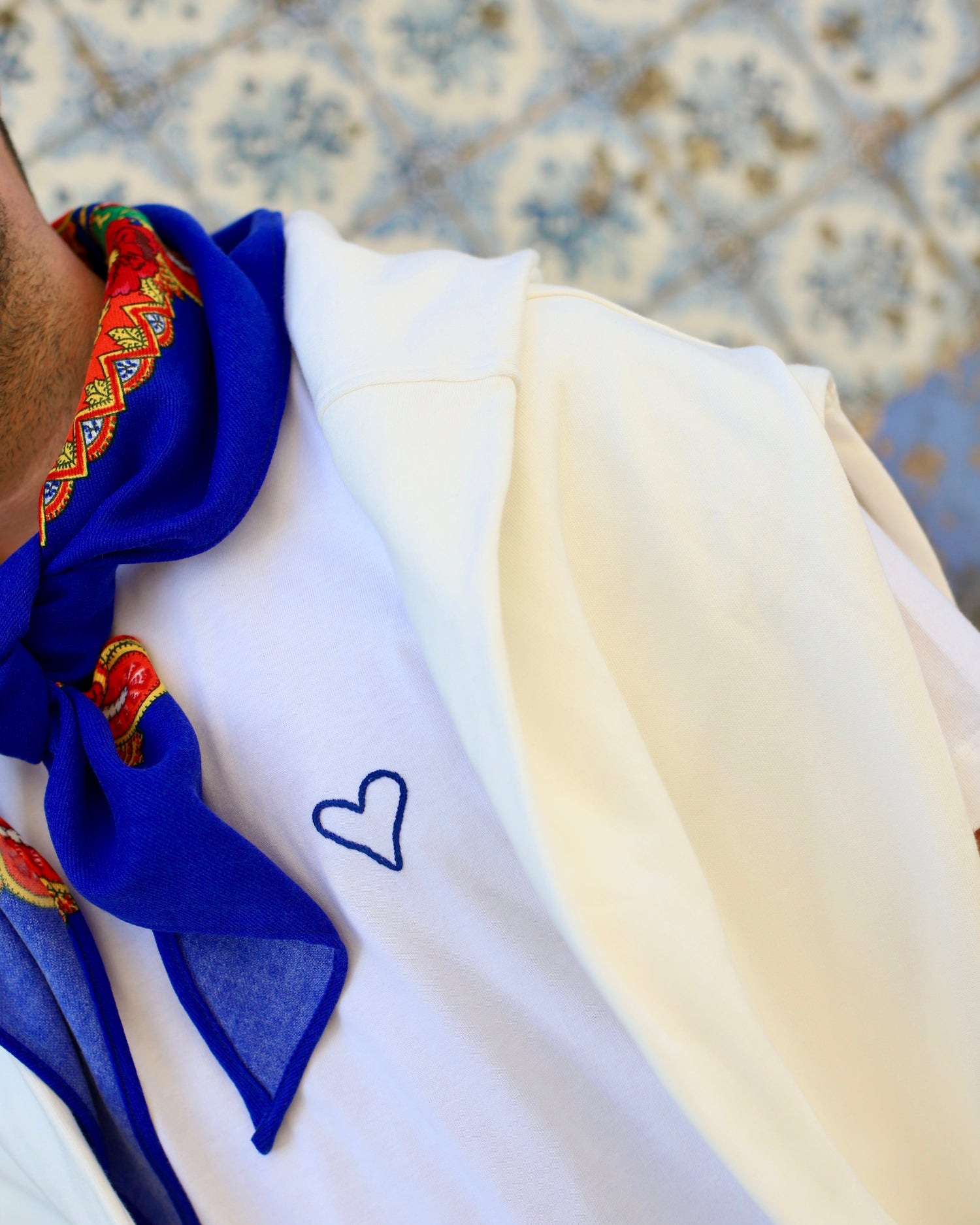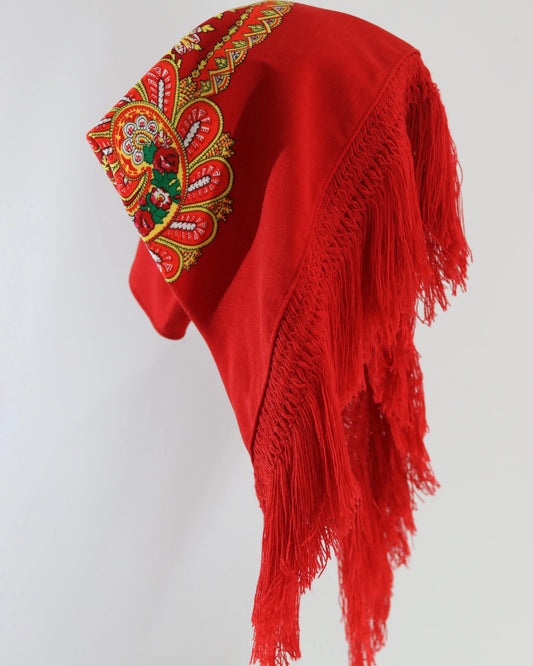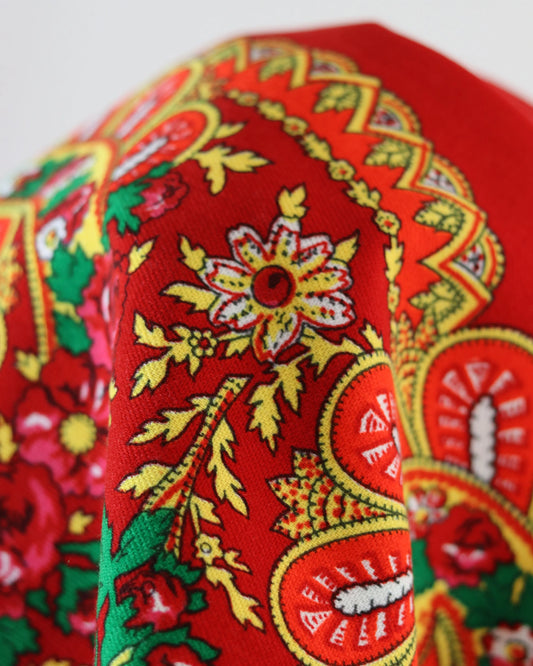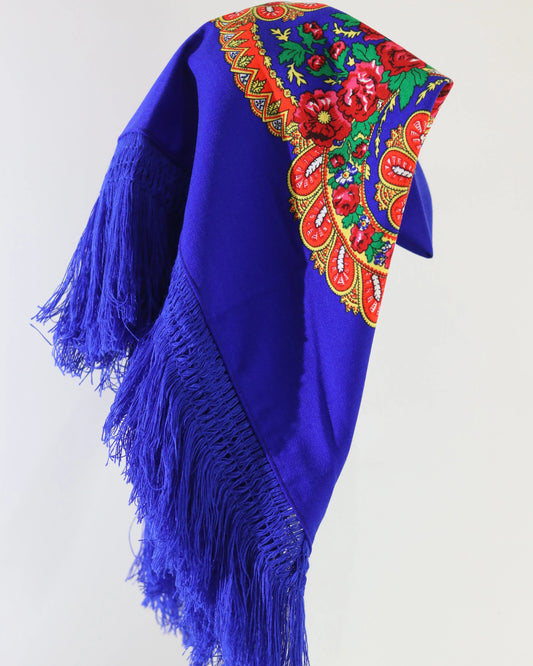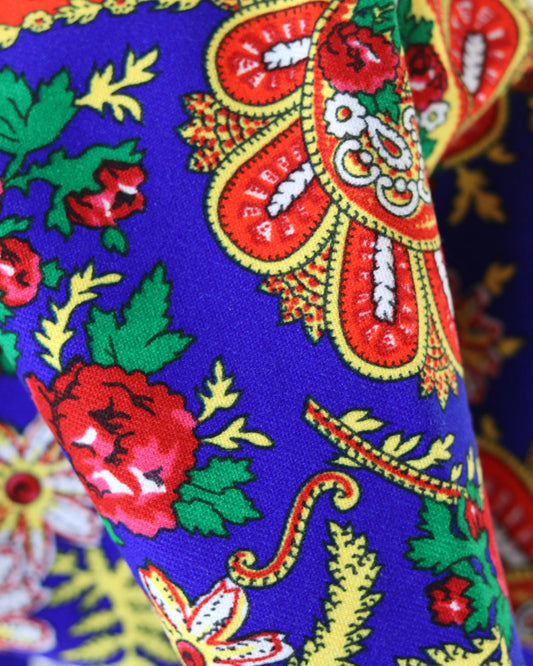The voices and songs of the festivals of agony: tradition and emotion
There's no need to ask anyone where the festivals are; just follow the voices. Those of those praying, those singing, those responding in the improvised chorus that emerges on street corners and squares. In Viana, when August heats up, sound becomes geography. Devotion makes way, the people tune in to memories, the bands warm up their brass, and suddenly, the city transforms into a body that breathes music.
Some arrive for the first time and remain silent, listening. Others immediately recognize the rhythm of the Minho, the cadence of the vira, the emotion of the ladainhas. What seems simple has decades of invisible transmission. A tuning that passes through the kitchen and the sacristy, through rehearsals in garages, through porches where entries and exits are monitored, through the sound of the sea that sets the tone for prayers.
A territory of voices
The Festas d'Agonia make the voice a house with many rooms. At each moment, a register. At each street, a timbre.
- In the church, the choir and the people, in a sung prayer that extends the words and the pages of the missal.
- In the churchyard, the song that brings a smile, with circle dances and the rhythms of vira, malhão and chula.
- In Ribeira, the litanies that embark with the fishermen and their families, in a whispered embrace between water and salt.
- In the scuffles, the singers in harmony of thirds, the accordion pulling the response.
What unites these spaces is the conviction that singing is not an ornament. It is the very act of being.
When devotion becomes sound
There's a clear difference between the spoken word and the sung word. At solemn Mass, the liturgical ordinance takes on a broader outline. The "Lords, have mercy" are unhurried, imprinted as if written with a thick pencil on paper. The same occurs in litanies: the names of the saints, repeated, form a chain of voices that accompanies each step of the float.
This tension between recollection and reflection inhabits the Procession to the Sea and the River. On the shore, there is a respectful silence, interrupted by long phrases of Hail Marys and Salves, with small melodic flourishes at the end of each invocation. On the ornate boats, the voices curve with the rocking, as if the water were tuning out their breathing.
The body serving the voice
Singing on the street requires a different technique. The air vibrates differently, the acoustics escape to facades and balconies. Many sing with their hearts open, the resonance vibrating in their masks, their mouths well-shaped so that each syllable finds its way. Some are unfamiliar with the terms, but have learned from experience how to release their voice without breaking.
The one guiding the responses, often a woman in a red scarf, marks entrances with her eyes and a hand fan. It's a discreet, almost imperceptible, but decisive direction.
Polyphonies that tell who we are
In Minho, spontaneous harmony thrives on parallel thirds, sometimes sixths, in a vocal fabric that seems elementary but, in fact, maintains a fine balance. The main line holds the melody, the counterpoint knows where to soften and where to thicken. The result is a sonic depth that warms without weighing down.
- Parallel thirds: emotional reinforcement, immediate closeness.
- Low pedal of men in litanies: stable ground for the high voice.
- Occasional catchphrases: support for passages that require a breath.
Tuning doesn't always match the tempered one, and that's a good thing. There are micro-deviations that add character, modal echoes that rhyme with the old.
Instruments that call and respond
The voice is at the center, but it rarely stands alone. The typical instrumentation gives it body, brightness, edge, and continuity.
- Concertina: keeps time, triggers calls, holds the tone between the blocks.
- Bagpipes: color of procession and church exit, timbre of solemnity.
- Bass drum and snare drums: rhythmic floor for the rusgas and for the march of the floats.
- Cavaquinho and viola braguesa: the embroidery of harmonies, the percussive backing of the rasgueado.
- Philharmonic bands: brass and woodwind instruments for processional marches and pasodobles in the ethnographic procession.
The confluence of voices and instruments is not constant. He knows when to retreat, when to show absolute presence, when to disappear so that the words are left bare.
Sound moments of the party
Reading the program can focus on parades and schedules. Attentive listening creates a different agenda, made up of moments.
| Moment | Corner type | Prevailing voices | Instrumental support | Progress |
|---|---|---|---|---|
| Solemn Mass | Responsorial liturgical song | Mixed choir and assembly | Organ, sometimes a cappella | Slow and sustained |
| Stewardship Procession | Hymn and processional march | Spontaneous choir and devotees | Philharmonic bands | Regular, ceremonial |
| Procession to the Sea and the River | Litanies and Hail Marys | Female voices in the foreground, bass in response | Without instruments or with very discreet support | Paused, undulating |
| Night out | Singing to the challenge, turn, malhão | Singers, singers and street choir | Concertina, cavaquinho, bass drum | Alive, dancing |
| Ruins | Nursery rhymes and calls | Parish groups | Concertina and percussion | Medium to fast |
| Serenade to the Lady | Nightly devotional songs | Small groups, slow pace | A cappella or soft strings | Slow, withdrawn |
| Ethnographic Procession | Modinhas, craft songs | Representation choirs | Traditional bands and groups | Variable, theatrical |
| Band Meeting | Marches and melodic passages | Instrumentalists | Metals and woods | Moderate, bright |
Each line has a distinct grammar. The attentive listener recognizes it, even without naming it.
Lyrics that stay in your memory
The Minho language paints the stanzas with specific colors. The open vowels, the diphthong drops, the brief laughter at the end of the verse. There are stanzas that have been repeated for decades and still sound fresh.
- Quatrains of love and mischief, exchanged as a challenge.
- Praises to Our Lady, with images of the sea and linen.
- Greetings to the city, the trades, the stewards and the fishermen.
An example of a greeting, heard more than once at dusk:
O Lady of Agony
Lady of the open sea
Take the prayer in the tide
Bring our right song
And a challenging verse, with the accordion smiling between verses:
You sang that you are from the riverside
I sing from the top of the hill
If your voice comes from the water
Mine reaches the bridge
It's not about erudition, but about precision. The terms chosen measure the city's time.
The role of philharmonic bands
Bands give unity to steps and paths. The processional march, designed to match the slow advancement of the floats, ensures support and breathing. The woodwinds articulate, the brass crowns, and the percussion guides the rhythm. In the ethnographic procession, the palette changes, pasodobles and arrangements of traditional themes appear, enlivening the audience without stealing the focus from the songs sung by the community.
There's one essential point: when the litany begins, the band knows to shut up. Switching up isn't an imposition, it's a tacit understanding. Music at the service of the moment.
Technique without manual
Singers tune in through coexistence. There is no written score for most songs, but there are implicit rules.
- Clear entries, by breathing together.
- Repetition of the last word, a little glue between the verses.
- Volume adjustment depending on the space.
- I step back when the soloist creates a melisma, I step forward when the phrase requires body.
Rehearsals, when they exist, take place in kitchens, association headquarters, churchyards, and classrooms. Technique is born from practice and care. Those who fail, repeat. Those who succeed, teach without fanfare.
The acoustics of streets and waters
The sound responds to the granite facades, the archways, the alleys. There are alleyways that create a chamber effect, ideal for a cappella vocals. There are wide spaces that call for strong percussion, so as not to lose the pulse. Along the river, the sound opens up, losing some definition and gaining amplitude. On boats, the wood returns warmth to the midrange.
Street musicians know these secrets. For a long hymn, you choose a corridor. For the rough streets, a wide street. For the litanies, the margin, where the words can come and go.
What you learn by listening
Those who listen closely begin to notice layers. First, the obvious melody. Then, the combined breathing. Finally, the way the group organizes itself to avoid tiring.
- Alternating soloists to save breath.
- Rotation in the second voices.
- Microgestures to adjust tempo: a look, a sway of the body, a hand that rises slightly.
The listener also participates. The murmur of response must be clear, without drowning out the conductor. Applause should wait until the end of the piece, so as not to break up phrases that are still in the air. Respect for the sung word maintains the flow.
Stories that are sung
There are narratives that return every year. The storm of a distant summer, the net that tore, the promise made and kept. These stories appear in verse, sometimes with proper nouns, sometimes with metaphors. A song can transform loss into belonging. In a short quatrain, four verses deliver justice and shelter.
When a stewardess sings a hymn, it's not just her voice. It's the voice of her family, of the parish, of the many women who wore the robe and kept the secret of its tuning. Each earring, each golden thread, summons another layer of silent sound.
The future that can already be heard
Youth groups have experimented with blending traditional repertoire with small harmonic variations and discreet arrangements. The essentials remain: the words above the music, the dance respecting the singing, and the devotion setting the tone. High-quality digital recordings help to establish versions without becoming rigid.
Community archives, community centers, and cultural associations are beginning to preserve recordings of old singers. These voices, with the roughness of time and the sweetness of those who have sung extensively, are a reference for those arriving now.
Good practices for recording
- Ask for authorization, explain the purpose of the recordings.
- Avoid intrusive microphones during prayer times.
- Identify interpreters and locations whenever possible.
- Share copies with groups and parish.
Sound memory thrives on respect and sharing. If preserved with care, it gains new life.
How to participate without losing your tone
You don't have to be local to sing. There are small gestures that open the door.
- Learn two or three simple verses before the party.
- Listen first, enter into answers discreetly.
- Follow the accordion, which often indicates the height.
- Sing with a natural voice, without shouting, so as not to get tired and not to cover others.
- In devotion, prioritize the intelligibility of words.
The festival thrives on those who know and those who want to learn. The circulation between these two groups creates a larger chorus.
Useful vocabulary for better listening
- Litany: repeated invocation with responses, in procession or in church.
- Rusga: group that walks through the streets singing and dancing.
- Vira, malhão, chula: dance and song forms from Minho, with their own rhythmic patterns.
- Singers up for a challenge: improvisers who exchange verses with mischief.
- Stewardship: organization and presence of stewardesses, in traditional attire and jewelry.
Knowing the names helps us recognize moments and appreciate those who keep them alive.
A place to listen to every moment
Those looking for a sound map can choose different points of the city.
- Churchyard, feast morning: a cappella singing with natural projection.
- Lima Riverbank, late afternoon: long litany with engaging answers.
- Central square, night: crossroads, concertinas in dialogue.
- Narrow streets of the historic center: ideal camera effect for whispering blocks.
The change in time and light alters the sound. The same verse said at 11 a.m. and at 11 p.m. has different flavors.
Verses that return
To end the day with the right music, some people repeat softly, on their way home:
Lady of my life
Reach out to my people
May the prayer we leave here
Come back again tomorrow
And there is always room for a smile between friends, with the concertina as an accomplice:
Viana, you have a beautiful voice
Made of sea and sun
Who sings at your party
Go lighter all year round
Between devotees, musicians, singers, and curious onlookers, the city finds its tune. The party passes, the resonance remains. And the next tide, you hear it again in the same place.



